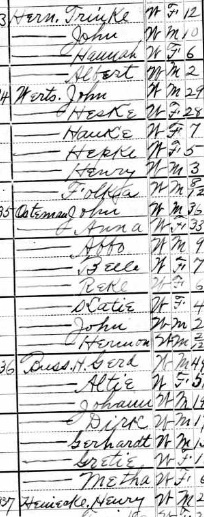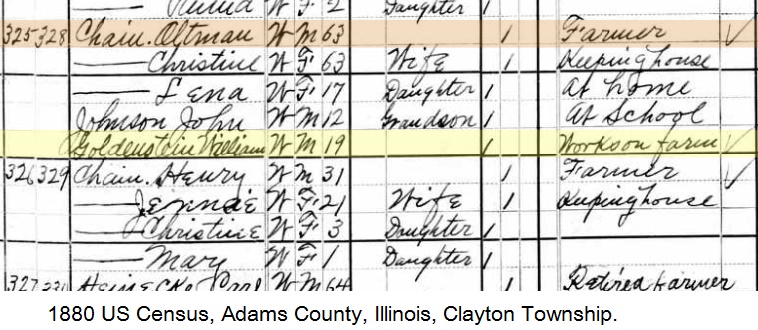A reader asked about the dots that appeared after the two names in the image used to illustrate the post about an 1880 census entry, “Who are Those Chains?”
I’m usually pretty good at looking for any and all clues. However, in my focus on the “chains” and who they were I overlooked the dots. Sometimes it’s easy to have tunnel vision when looking at any record.
When other entries made by the same census taker are viewed, it’s pretty easy to discern that the “dots” usually follo w the last name of an individual when others with that same last names have census entries on following lines. It’s a way to separate the last name from the first name.
w the last name of an individual when others with that same last names have census entries on following lines. It’s a way to separate the last name from the first name.
Sometimes a dot is just a dot.
It’s always advised to look at notations for possible clues. In this case the dot was not really significant. The best way to determine if something is unusual about an entry is to compare the entry to other entries within the record.
This is why it’s not advised to clip an entry too tightly when making a digital image of it. This is why when making personal copies of many records (particularly church records in a foreign language) I copy the entire page on which the desired entry appears.
This is also why citation is important. If I know exactly from where I obtained a entry and later I need see other entries in the same series of records, I can more easily do that. That’s one element of genealogical analysis that is sometimes overlooked.
Context matters.
That’s what helps genealogists to connect the dots.
Whether they appear on the record or not.


2 Responses
Could there have been something more to that spelling if last name. So many changed spelling
The “Louis or Sonis” from the previous day reminded me of the 1850 Yazoo County, MS census. It is difficult to tell the capital L and S apart. The L and S were not made the same way, but if you looked at only one entry it would be very easy to make a mistake.